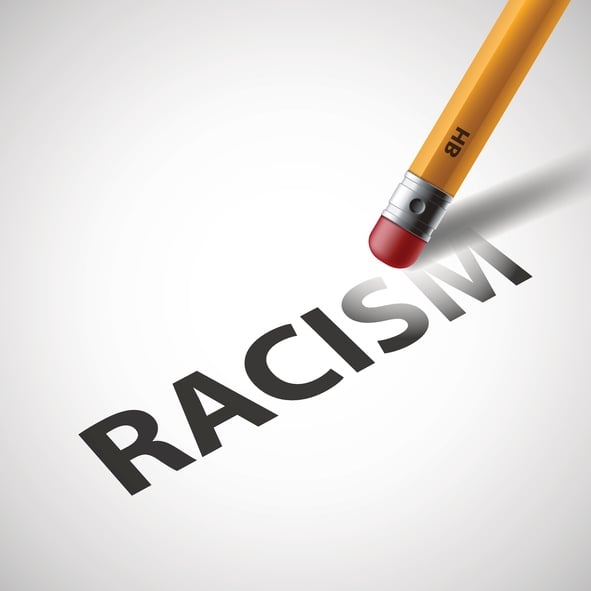You have /5 articles left.
Sign up for a free account or log in.

iStock/Trifonenko
For most of my younger years, I was known as a kid who did well in school and liked to read. Despite living in a rural and homogenous area, I was never “othered” at school because of my racial and ethnic identities. I took women’s studies courses in college, wherein I began to learn the importance of various social identities and the intentional work that is needed to create and maintain inclusive spaces for everyone. I chose my graduate school because of its commitment to diversity, but I naïvely assumed that it would be a focal point of the majority of my classroom and applied clinical experiences.
As a cisgender woman who belongs to the LGBTQ community and identifies as black and Chicana, affirming diverse identities is important to me. I remember how, during my first year of graduate school, every student was required to take two diversity courses. During that time, I learned about Pamela Hays’s ADDRESSING model, which provides a framework for acknowledging and assessing clients holistically. Yet, in the subsequent courses I took, diversity was only vaguely referenced, with the exception of fellow students making a point to interject a distinct perspective.
I found that discouraging but was fortunate in having a practicum supervisor who intentionally integrated cultural aspects into our discussions about my clients. I also tried my best to surround myself with like-minded colleagues who appreciated the importance of diversity in all its forms.
My first encounter with explicit racism in a professional setting was at my second practicum site. The first unit to which I was assigned closed, forcing me to choose another unit to complete the remainder of my practicum experience. The deciding factor in choosing the second unit was that a close friend and colleague who conceptualized clients similarly to me also worked there. She seemed to enjoy her work with the clients, but she had occasionally shared her grievances about the unit supervisor (a white male) to me. I went to the unit with all of my academic and clinical knowledge, ready to create positive working relationships with my new team. However, it seemed that not everyone shared this perspective of openness and collegiality, particularly the unit supervisor.
Upon my arrival, and over the course of a month and a half, the unit supervisor never spoke to me. Initially, I excused his behavior as a consequence of him being busy, just not seeing me, or maybe that I failed to greet him loudly enough to hear and see me. But I was also beginning to feel resentful because I was consistently being ignored.
One day, my friend and colleague (a black woman) and I were sitting in a room with two white women while our clients were in groups. The supervisor stopped by and greeted the white women before returning to his office, as if my colleague and I were not even present. I later realized that I was not on the supervisor’s list for team emails, and I was missing important updates on my clients. I sent an email to request to be added to the list, our first correspondence ever, occurring nearly two months after me joining the unit.
So, I decided to test things: I made up my mind that I would see the supervisor in passing and greet him loudly so there was no doubt he could hear me. I did this, and called him by name with a smile as I passed. He still ignored me. As he continued to walk, he spoke to a white woman who was walking in the same direction as me. At that point, I realized his behavior was not simply a figment of my imagination. Rather, it had to be racism.
I pride myself on my assertiveness in school and the workplace, and I took comfort in the transparency of the supervisory relationship with my clinical supervisor. During one of our sessions, I decided to confide in him about the way that things had transpired between the unit supervisor and me. I shared the aforementioned examples. As I spoke, my supervisor seemed uncomfortable. So, I proceeded cautiously with my next statement: “I’m not calling him racist, but the way I have been treated feels like racism.” My supervisor responded hesitantly and noted that he had heard another person mention the “microaggressions” from other staff on the unit. As he continued to skirt around the issue, I felt frustrated with sharing my experience because he invalidated it by using a term to, essentially, soften the blow -- and he did not offer a course for resolution; instead, I offered my own.
When therapy is concerned, I always say, “It is not the responsibility of the client to educate the therapist.” I feel similarly when issues concerning various -isms are involved: it is not the responsibility of the oppressed to educate the oppressors. Yet that often ends up being the case.
Even in professional and academic spheres, the narratives of the oppressed are frequently excluded and replaced with generic (read: privileged) accounts, placing the onus on marginalized people to inform the privileged about their experiences. Similarly, when the narratives of the oppressed are included, there are many instances wherein the true struggle of oppression is glossed over in efforts to protect the feelings of those who may not empathize with the oppressed group. In a place where I assumed that my concerns would be validated and that my supervisor would advocate for and with me, I was disappointed by his passivity and efforts to sugarcoat what was obviously racism. I had colleagues who validated my experience and shared their own, but it is extremely difficult to change things for the better without those in positions of power on your side.
As I reflect on the courses I was taking during that time, none of them seemed especially appropriate for me to share these experiences of racist behavior. Many colleges and universities pride themselves on their commitment to diversity, yet that commitment often seems to be superficial. When course work focuses on specific examples that regularly showcase white, heterosexual, able-bodied individuals, the narratives of people of color, people who are disabled, LGBTQ people and so many more are dismissed and “othered” in the process.
I firmly believe that it is necessary for classes and academic spheres to provide intentional spaces for reflections on various systems of oppression, whether that be through case material, personal anecdotes from students or readings that consistently address multicultural issues. It is not enough to have two obligatory courses devoted to diversity while using a blanket approach for other courses.
As students and professors in higher education, we are called to do the work of inclusivity, particularly in academic settings so that it is more easily integrated within our respective spaces in the community. That is not to dismiss the difficult nature of intentional inclusivity, though, as it is hard work. We can only achieve goals of inclusiveness and anti-racism by continually challenging ourselves to learn more, by consistently applying and sharing our new knowledge, and through inviting others to share their personal experiences in safe and validating spaces.




